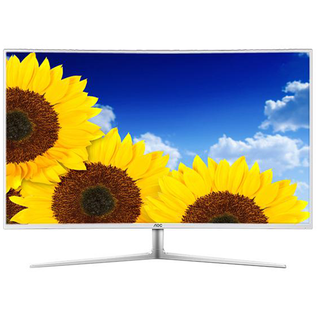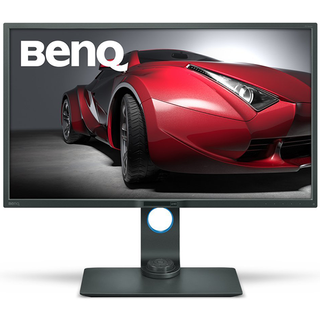ViewSonic VP2768 Professional Monitor Review
Why you can trust Tom's Hardware
Brightness & Contrast
To read about our monitor tests in depth, please check out Display Testing Explained: How We Test Monitors and TVs. Brightness and Contrast testing are covered on page two.
Uncalibrated – Maximum Backlight Level
Today’s group is made up of professional screens ranging from 27” to 40”. All employ IPS panels except the AOC C4008VU8, which uses a high-contrast VA part. The Dell UP2718Q is unique with its 384-zone backlight and HDR10 support. Rounding out the pack is ViewSonic’s VP2771, BenQ’s PD3200U, which earned a Tom’s Hardware Editor’s Choice Award, and Acer’s BM320.



The VP2768 provides plenty of output and meets its claimed 350cd/m2 spec while drawing only 29 watts at max brightness thanks to a power-efficient panel part. There is plenty of overhead available if you want to use uniformity compensation, which is turned on by default in the preset color modes. Black levels are about average for the class as is the contrast ratio of just under 1000:1. If you’re looking for ultimate image depth, the C4008VU8 delivers almost five times more dynamic range than the next best screen.
Uncalibrated – Minimum Backlight Level



At just over 46cd/m2, the VP2768’s minimum backlight setting is ideal for working in the dark environment of a video editing bay. Black levels shift proportionally, which means a nearly identical contrast ratio of 980.5:1. Users can tailor output to whatever level they wish without sacrificing any image depth.
After Calibration to 200cd/m2



After calibration, the contrast ratio has dropped a little, to 957.2:1. The uniformity compensation mainly affects higher brightness levels and results in a 33% loss of output. There is a caveat here, however: UC is not available in the Custom mode where we performed our adjustments. You can only access it in the preset color modes or with Colorbration. Therefore, our comparison is not entirely fair. If you simply choose sRGB, for example, you’ll be locked into that 132.4447cd/m2 value. But if you turn compensation off, the brightness control becomes available and you can run output right up to the 350cd/m2 maximum. You can also see the deleterious effect of UC on contrast: it’s cut nearly in half.
ANSI Contrast Ratio

ANSI contrast stays strong at only 4% below the sequential value. That’s excellent performance, and what we’d expect from a premium panel like the VP2768. Engaging the uniformity compensation results in the same drop in dynamic range we saw above: around 50%. Our sample didn’t need any help in that department so we left it off for all further tests.
MORE: Best Gaming Monitors
MORE: Best Professional Monitors
MORE: How We Test Monitors
MORE: How To Choose A Monitor
MORE: All Monitor Content
Current page: Brightness & Contrast
Prev Page OSD Setup & Calibration Next Page Grayscale, Gamma & ColorStay on the Cutting Edge
Join the experts who read Tom's Hardware for the inside track on enthusiast PC tech news — and have for over 25 years. We'll send breaking news and in-depth reviews of CPUs, GPUs, AI, maker hardware and more straight to your inbox.

Christian Eberle is a Contributing Editor for Tom's Hardware US. He's a veteran reviewer of A/V equipment, specializing in monitors. Christian began his obsession with tech when he built his first PC in 1991, a 286 running DOS 3.0 at a blazing 12MHz. In 2006, he undertook training from the Imaging Science Foundation in video calibration and testing and thus started a passion for precise imaging that persists to this day. He is also a professional musician with a degree from the New England Conservatory as a classical bassoonist which he used to good effect as a performer with the West Point Army Band from 1987 to 2013. He enjoys watching movies and listening to high-end audio in his custom-built home theater and can be seen riding trails near his home on a race-ready ICE VTX recumbent trike. Christian enjoys the endless summer in Florida where he lives with his wife and Chihuahua and plays with orchestras around the state.
-
Lutfij Another well written write up Chris! One question though, is the monitor VESA mount compatible? From the side shots and the rear, the monitor looks like it can be detached from the stand and subsequently mounted to an arm/wallmount.Reply


